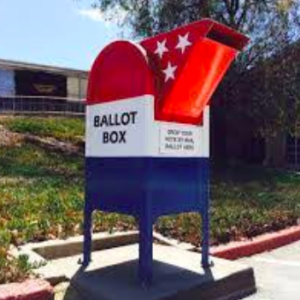As COVID-19 cases increase in the United States, states must prepare alternative voting options for November. What options do the public prefer?
States have options to ensure that voters have accessible and health-conscious options to exercise their right to vote. Five states already have all-mail voting and others have allowed registered voters to request mail-in ballots regardless of reason to decrease the number of in-person voters on Election Day.
Limited pilot studies of internet voting continue, although the federal government reportedly warned states about the cybersecurity and fraud concerns. Finally, early voting allows citizens to cast their ballots as early as 40 days before Election Day.
For primaries, states expanded early and mail-in voting, often resulting in record voter turnout, but also saw wait times of multiple hours at polling locations and mail-in ballots that arrived too late to be counted.
These options also mean that “Hail Mary” campaign tactics or the typical “October surprise” might come too late for early voters to factor these into their decision.
Through the International Public Opinion Lab at Western Kentucky University we surveyed 1,027 Americans on July 7. We randomly assigned respondents to one of three voting prompts.
Version 1: All registered voters in the United States should be able to choose to vote via mail-in absentee ballot.
Version 2: All registered voters in the United States should be able to choose to vote online via internet ballot.
Version 3: All registered voters in the United States should be able to choose to vote early in person.
We found a majority of respondents support mail-in voting (72.26 percent), with Democrats more supportive than Republicans (88.33 percent vs. 45.16 percent).
Surprisingly, internet voting received majority support (58.26 percent), with a similar partisan divergence (Democrats: 74.56 percent, Republicans: 45.19 percent) Last, 76.23 percent supported early voting, with the smallest divergence across parties (Democrats: 83.43 percent vs. Republicans: 70.59 percent).
That opposition among Republicans was weakest on the early voting option contrasts with a 2018 Pew Research poll that showed just 57 percent of Republicans supported the option.
Republican support for early voting may be due to the minimal number of process changes, the wide availability of early voting, and the view of early voting as a more secure alternative to mail-in ballots and internet voting. As of 2020, only 10 states lacked statutory requirements for some form of early voting.
We also asked all respondents to rate two additional statements that potentially influence views on alternative voting options:
— “I am concerned about foreign election intervention in this year’s presidential election.”
— “I am concerned about contracting COVID-19 (coronavirus).”
Majorities stated they were concerned about foreign intervention (52.29 percent) and COVID-19 (55.81 percent), with Democrats more concerned than Republicans, with a 30.37 percent difference regarding foreign election intervention and a 22.33 percent difference regarding COVID-19.
Additional analyses found that concerns about foreign intervention are statistically significant and positively correspond with support for mail-in and early voting, but not internet voting. We expected that concerns about foreign election interference could reduce support for internet voting, but statistical tests did not bear this out.
People afraid of contracting COVID-19 were more likely to support voting options that did not require them to appear in person (mail-in and internet voting), yet we found no significant correlation between concerns for COVID-19 and support for early voting. This may be simply because data already show strong support for early voting across the political spectrum.
Despite not corresponding with fear of COVID-19, our results also show a bipartisan support for early voting, which may provide a means to sidesteps the partisan divide seen in previous surveys regarding mail-in voting.
In other words, if mail-in voting cannot be accommodated due to false claims by President Trump and others about election security, state efforts should focus on expansion of early voting options, as security objections would not apply.
Critics might argue that early voting does no better than Election Day voting in that it puts volunteers, a majority of whom are over 60, at an increased risk of exposure through prolonged contact with thousands of voters over many days.
Certainly early voting should not be the only option provided to voters, and the CDC recommends a variety of safety measures, including constructing plastic barriers, encouraging voters to wear masks, and providing longer voting periods over many hours or days.
Data from Pew Research show that more than one-in-four young adults have been unemployed in the last few months, leaving millions of civic-minded young professionals and post-grads without jobs. Through targeted volunteer recruitment, state and local election offices can harness the energy, time and passion of Gen Z and millennial citizens as poll workers.
Ultimately, public perception matters in establishing the credibility of an election and the results. If election officials highlight and encourage early voting, it not only mitigates health risks but also challenges the perceptions of fraud.
Early voting is not a perfect solution, but bipartisan support for safe, accessible and secure voting methods during a historic election year should not be overlooked.

